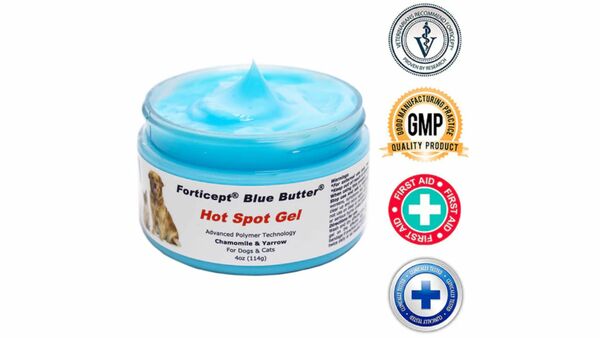Notifications
ALL BUSINESS
COMIDA
DIRECTORIES
ENTERTAINMENT
FINER THINGS
HEALTH
MARKETPLACE
MEMBER's ONLY
MONEY MATTER$
MOTIVATIONAL
NEWS & WEATHER
TECHNOLOGIA
TV NETWORKS
VIDEOS
VOTE USA 2026/2028
INVESTOR RELATIONS
COMING 2026 / 2027
ALL BUSINESS
COMIDA
DIRECTORIES
ENTERTAINMENT
FINER THINGS
HEALTH
MARKETPLACE
MEMBER's ONLY
MONEY MATTER$
MOTIVATIONAL
NEWS & WEATHER
TECHNOLOGIA
TV NETWORKS
VIDEOS
VOTE USA 2026/2028
INVESTOR RELATIONS
COMING 2026 / 2027
 Forti Cept -
May 16, 2024 -
Other -
Dog wound care
-
358 views -
0 Comments -
0 Likes -
0 Reviews
Forti Cept -
May 16, 2024 -
Other -
Dog wound care
-
358 views -
0 Comments -
0 Likes -
0 Reviews

Knowing how to handle injuries, especially wounds, is crucial when caring for our furry friends. Curious and adventurous, dogs can sometimes get into scrapes that result in injuries.
Whether it's a minor cut from a thorny bush during a walk or a more serious wound from an encounter with another animal, having the knowledge and confidence to administer proper wound care can make a significant difference in your dog's recovery. This guide will walk you through the essentials of dog wound care, providing step-by-step instructions to ensure your dog heals quickly and safely.
Step 1: Assess the Situation
Before you dive into treating your dog's wound, it's important to assess the severity of the injury. If the wound is deep, bleeding excessively, or if there is an object embedded in it, it's critical to seek immediate veterinary attention. For minor wounds, however, you can manage the care at home.
Step 2: Calm Your Dog
Dealing with an injury can be stressful for dogs. Ensure your pet is calm and comfortable before you begin any treatment. Speak softly, reassuringly and gently restrain your dog if necessary. Having another person assist you is helpful, especially if your dog is anxious or in pain.
Step 3: Clean the Wound
Cleaning the wound is crucial in preventing infection and promoting healing. Start by washing your hands and wearing gloves if available. If the wound is covered in dirt or debris, use lukewarm water to rinse the area gently.
For effective dog wound care, use a saline solution or mild antiseptic diluted in water to cleanse the area thoroughly. Avoid using alcohol or hydrogen peroxide directly on the wound, as these can cause irritation and delay healing.
Step 4: Apply Antiseptic
Once the wound is clean, apply a vet-approved antiseptic to further reduce the risk of infection. There are many products formulated specifically for wound care for dogs that can safely disinfect the injury without causing discomfort to your pet.
Step 5: Protect the Wound
After cleaning and disinfecting, the next step is to protect the wound from bacteria and further injury. Use a sterile bandage or gauze to cover the wound.
Ensure the bandage is snug but not too tight, as excessive pressure can hinder circulation and delay healing. Change the bandage daily to monitor the wound's progress and reapply antiseptic as needed.
Step 6: Monitor Healing
Monitoring your dog's wound is essential. Monitor the area for signs of infection, such as increased redness, swelling, heat, or discharge. If you notice any of these symptoms or the wound does not seem to be healing, contact your veterinarian immediately.
Step 7: Prevent Licking and Chewing
Dogs often lick their wounds, but this instinct can impede healing. Consider using an Elizabethan collar or a protective sleeve to prevent your dog from licking or chewing the injury. These devices can help ensure the wound heals without interruption.
Step 8: Follow Up with Your Vet
Even if the wound appears to be healing well, a follow-up visit to your vet can be crucial. Your veterinarian can confirm the wound is healing properly and provide additional care or treatment.
Final Words
Mastering the art of wound care for dogs is an invaluable part of pet ownership. By following these steps, you can manage minor wounds effectively at home, ensuring your dog's quick recovery and long-term health.
When in doubt, always consult your veterinarian to ensure the best care for your pet. Providing timely and appropriate care helps your dog heal and deepens the trust and bond you share with your canine companion.
